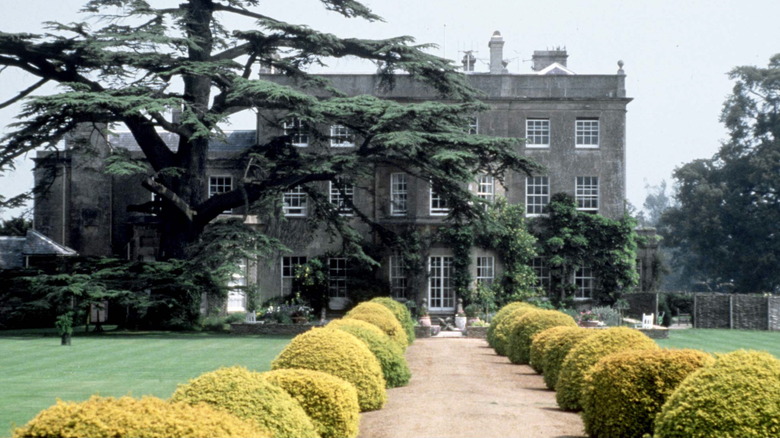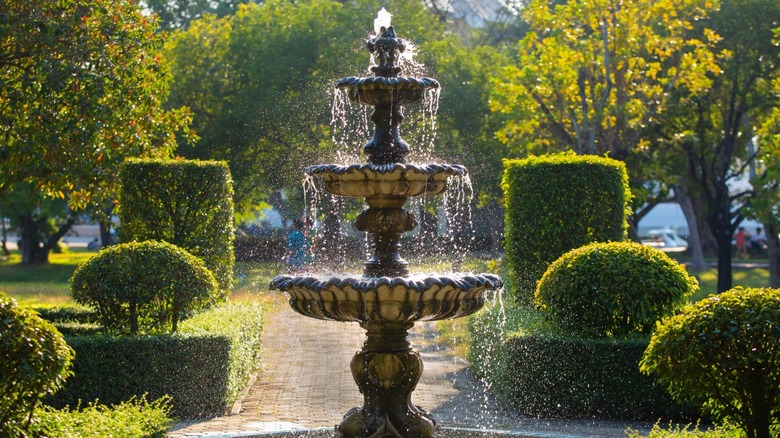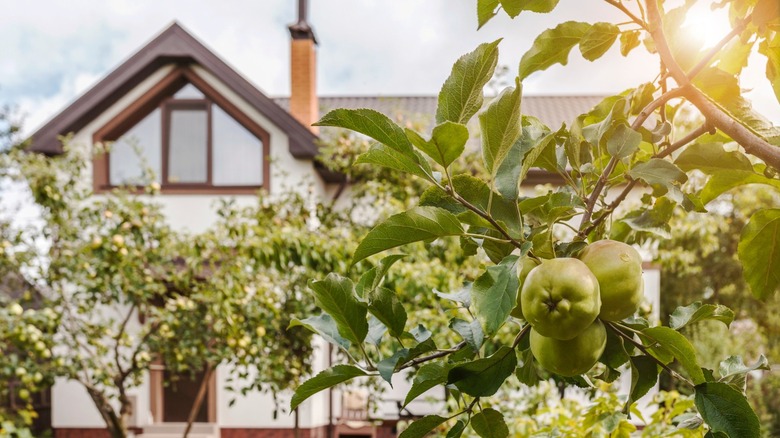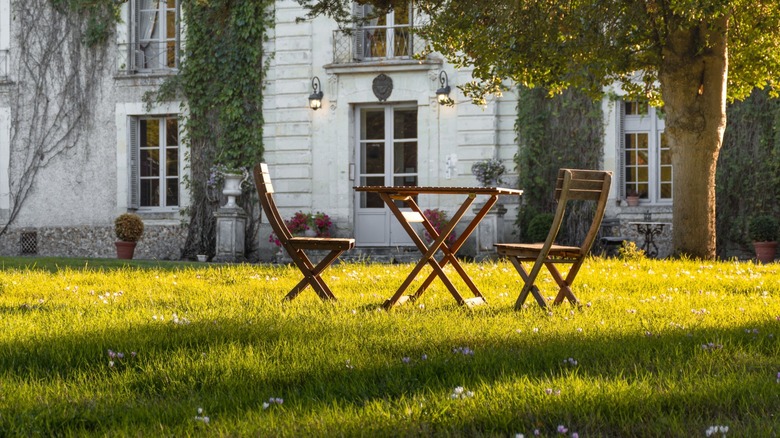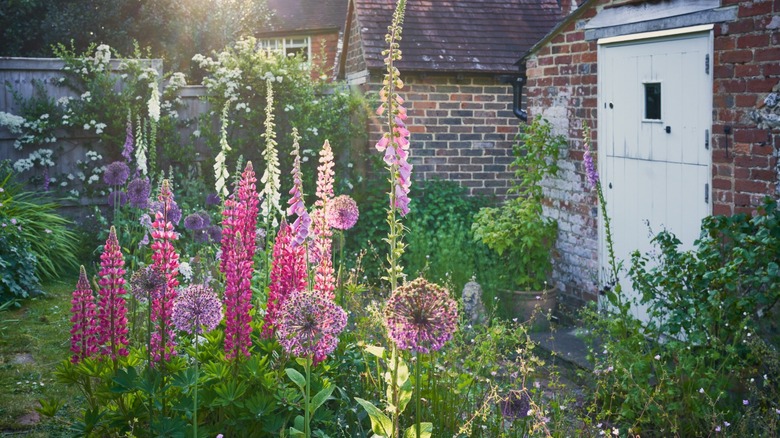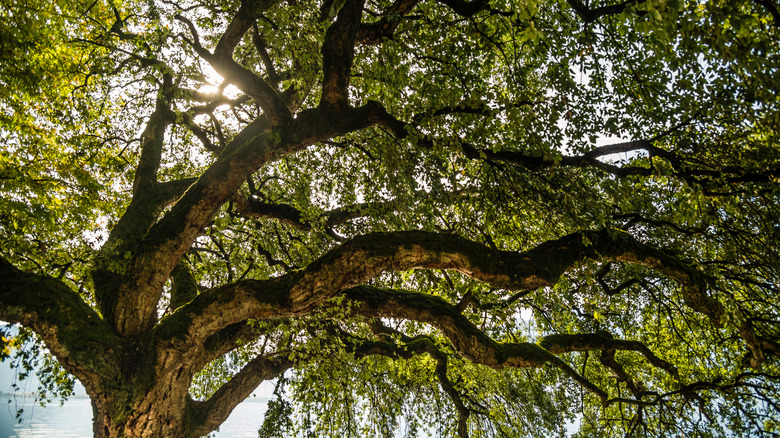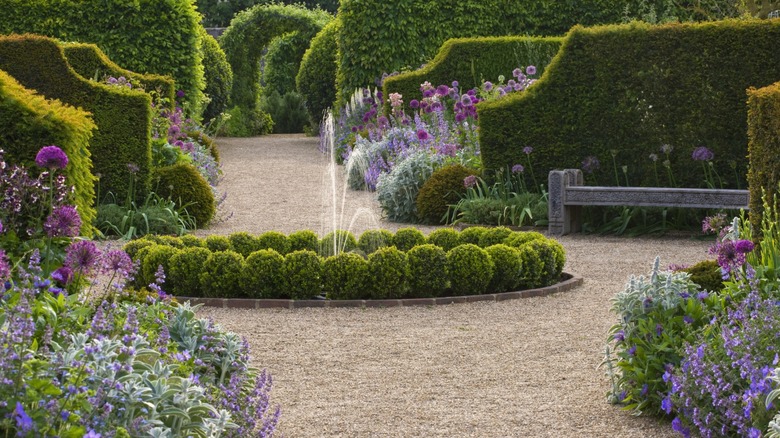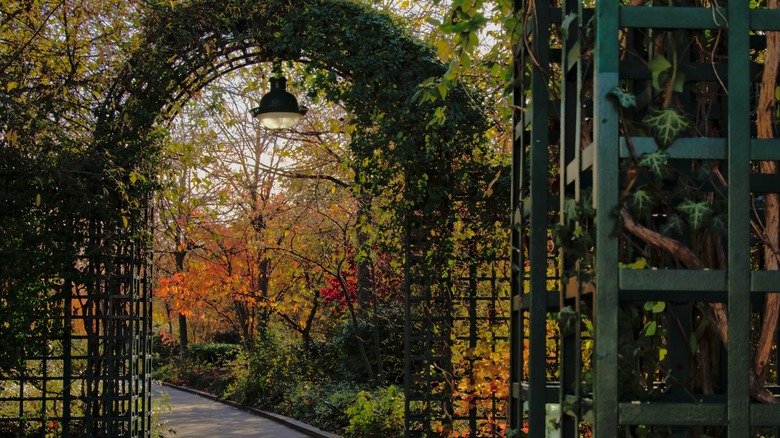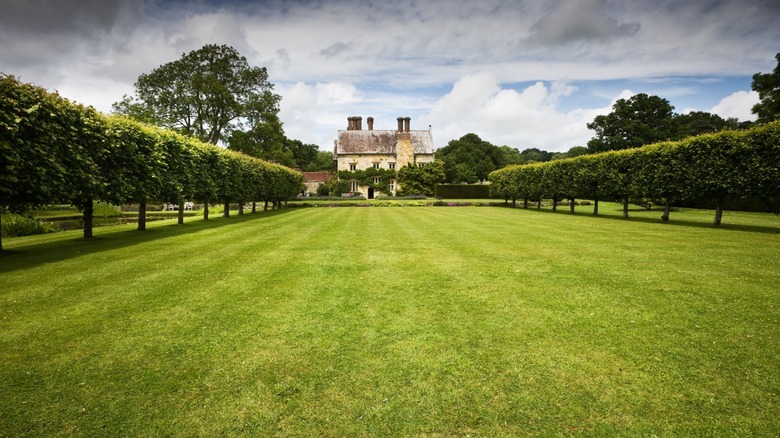How To Achieve The Old Money Aesthetic In Your Backyard
There's no denying that the old money aesthetic is one of the most embraced decor and lifestyle trends in recent years. Although the majority of us aren't aristocrats or landed gentry, neither royal nor heirs apparent, the trend encapsulates a desirable look and lifestyle that suggests vast inherited wealth and the pastimes that go with it. Whether it's embracing tenniscore or the coastal grandmother decor trend, binging Netflix shows like "The Crown" or the recently released "Polo", or ditching large logos for classic closet staples, it seems people can't get enough of trying to emulate the great and the good. From opulent lifestyles supported by staff to palatial estates surrounded by manicured grounds that stretch for miles, you're really only old money if you're born into it. But by understanding that true wealth whispers, appreciating the historical context, and embracing key elements of the old money aesthetic, like quality and conservatism, it's possible to achieve the look right in your own backyard.
It may not buy class, but over the centuries old money has certainly been an integral part of the most spectacular gardens in the world. From the oldest known topiaries at Levens Hall and the interlinked gardens at Highgrove, to the Old Westbury Gardens on Long Island's North Shore and the unique waterfront landscapes at Vizcaya in Miami, there are hundreds of outdoor spaces established by aristocrats and industrialists alike that you can look to, or even visit, for inspiration. You'll quickly notice the same elements are always used to create the understated elegance that embodies the old money aesthetic.
Let formality reign supreme
Formality is a vital element in old money gardens, and it's achieved with order, symmetry, and repetition. Whether you opt for an intricate parterre garden or architectural plants like clipped hedges of boxwood or yew, precision is the key to achieving the highly structured look. The formal gardens found on estates make the most of architectural plants that evoke a sense of grandeur. Old money is never flashy, so the layout should speak for itself. Use rows of the same plant to create strong lines and classic geometric shapes, leaving well-defined spaces for entertaining and reflection.
Choose quality over quantity
You'll be hard pressed to find an estate garden that doesn't incorporate a water feature. The same goes for statuaries. Many take the form of cherubs, rosettes, urns, or mythological figures. Rich is loud, but wealth is quiet, so to get the old money look, ditch any bright plastic gnomes and rustic roosters. Instead, choose decorative elements that are made of stone, metal, or other natural materials. At all times, select quality over quantity. One spectacular fountain or statue placed in the middle of a small symmetrical garden is better than several cheap concrete or imitation stone pieces sprawling across a large yard.
Grow your own food
According to garden historian Christina Harrison, the kitchen garden emerged in Roman times, but was thoroughly embraced by aristocratic country estates aiming for total self-sufficiency. Georgian and Victorian society doyens demonstrated their wealth by growing fruit, vegetable, and herb gardens that could sustain large households. Greenhouses were status symbols, as were the 'exotic' fruits grown in them. Today, sustainable food production remains an aristocratic passion of King Charles III in his ornamental walled kitchen garden. Follow suit by planting uncommon fruit trees in your backyard, defining your patio with an herbaceous border, or creating a potager garden to feed your family.
Entertain outdoors
Because old money is generational, heirs often end up quietly managing land holdings or family businesses rather than brazenly engaging in entrepreneurial attempts. Since they lead a more private lifestyle in general, preferring to keep a lower profile, old money is much more likely to entertain at home, sharing the abundance from their farms and gardens with a small inner circle. You can do the same by inviting your trusted family or friends over for an afternoon tea, a bottle of wine, or an alfresco dinner hosted at a simple table in the middle of your garden.
Plant heavy bloomers
Appreciation for the finer things in life is a hallmark of the old money lifestyle. Planting rare and heavy blooming flowers is one way to showcase beauty and wealth. The most renowned gardens incorporate flowers that add height, like foxgloves and hollyhocks, along with roses and other plants, like ivy, that can be grown vertically. Peonies, phlox, salvias, and lavender are also excellent choices. Consider sunken gardens, long borders, subtropical collections, or stumperies to add visual interest that looks like it was achieved through a significant investment in time, money, or both.
Maintain old trees
The ancient Greek saying "A society grows great when men plant trees in whose shade they shall never sit" reflects more than a proverbial attitude toward caring for nature. It also reflects the old money approach of maintaining and handing down wealth from one generation to the next. One way you can embrace this ethos yourself is to cultivate and grow flourishing shade trees and to carefully attend to older trees on your property that are showing their age. Their large trunks and thick branches create a stately visual effect while offering both economic and environmental benefits over time.
Pick a unifying color palette
Keeping in mind that order is one of the key elements you should embrace to achieve the old money aesthetic in your backyard, stick with a unifying color palette. Boxwood hedges, intricately shaped topiaries, and statuesque evergreen columns make a perfectly neutral background for collections of purple and white, shades of pink, or striking blue. Make sure to accent your plantings with hardwood mulches instead of anything dyed or rubber. Pick natural materials for paths, opting for pea gravel instead of concrete. Keep things sophisticated by selecting brick edging, natural steppingstones, and decorative elements of the same colors.
Buy for longevity
Quality and longevity are paramount for folks with old money, and they don't shy away from spending significant sums on items that will last long. So, when you find yourself debating between installing expensive gas lanterns or picking up some cheap tiki torches for the backyard, decide with longevity in mind. Invest in fencing, gazebos, or other hardscaping improvements that are built to last instead of opting for the best deal you can find on a flat-packed version you'll have to assemble (and probably replace soon thereafter).
Maintain your lawn and garden well
While you may not have the luxury of employing full-time gardening staff, maintenance is one of the most important things you can do to achieve the old money aesthetic. Classic, formal, and aged gardens boast well-established plants that are properly cared for. If you don't have the time or inclination, don't fret. Historically, a purely decorative lawn was something only the wealthy could afford. A thick and closely shorn turf featuring perfect lines can create the order and structure of a formal garden without the hassle or expense of cultivating ornamental or edible plants.
